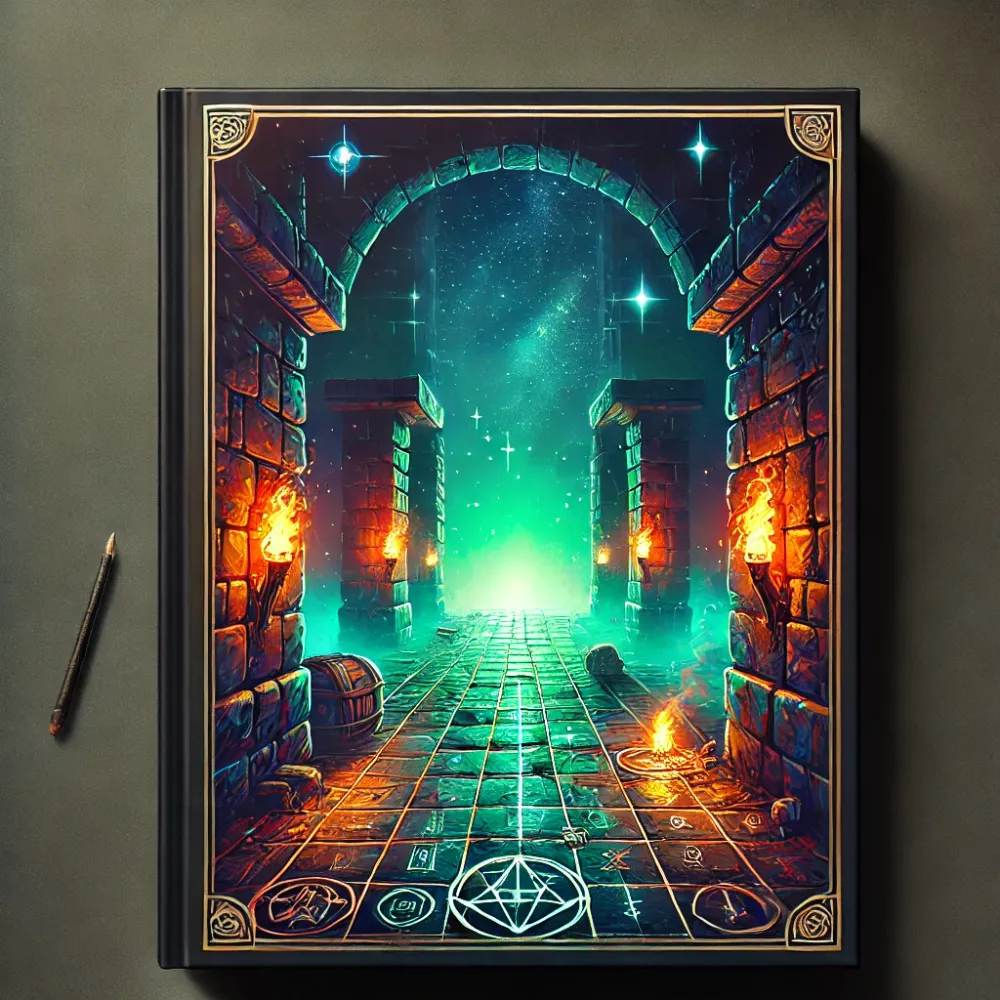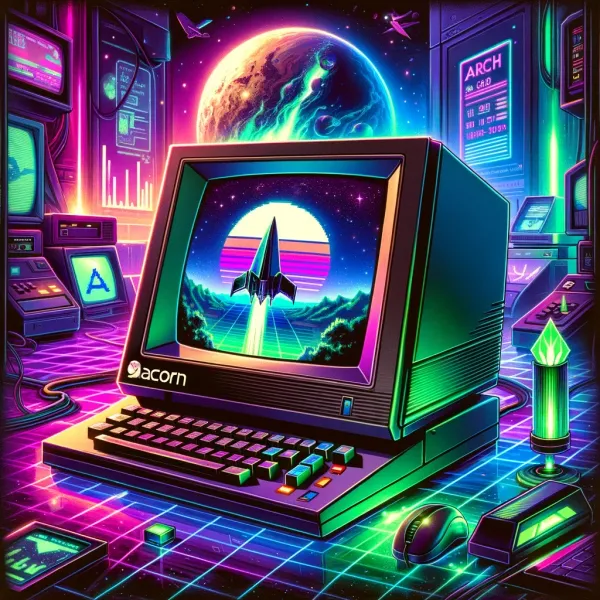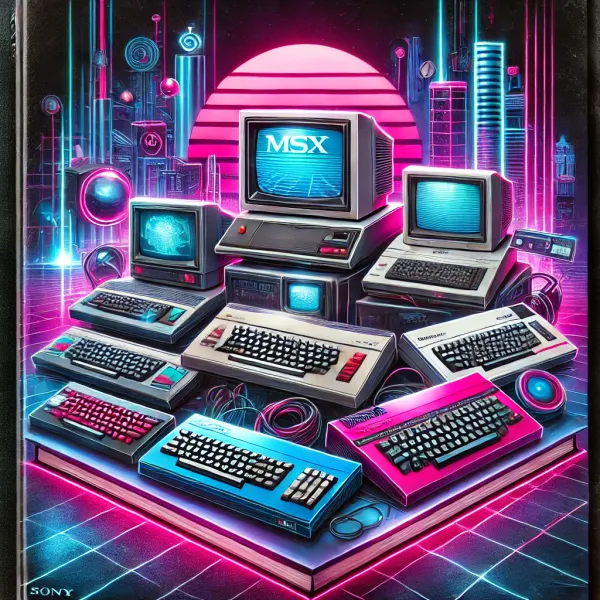Atari ST: A computer for gamers and creatives alike
Released in 1985, the Atari ST was one of the first personal computers to feature a 16-bit processor, making it a powerful machine for its time. The ST, which stands for "Sixteen/Thirty-two" (indicating its 16-bit external and 32-bit internal processor), was Atari's answer to the Commodore Amiga and IBM-compatible PCs. Known for its graphical and sound capabilities, the Atari ST quickly gained popularity in the gaming world, while also becoming a favorite among musicians and graphic designers for its versatility and affordability.
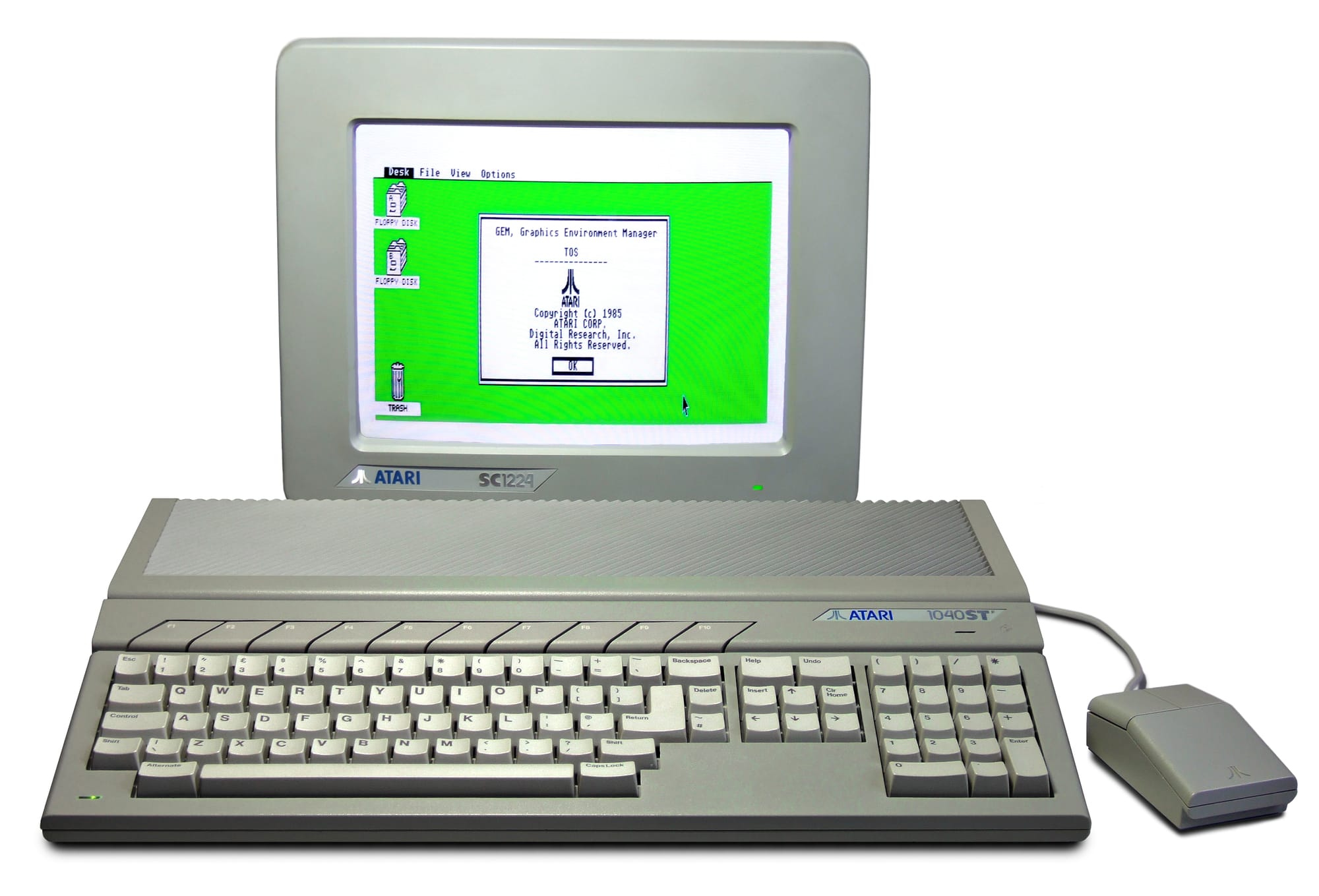
The ST’s design focused on accessibility and power. With a built-in floppy disk drive, 512 KB of RAM (expandable to 4 MB), and an intuitive graphical user interface (GUI) with GEM (Graphics Environment Manager), it allowed users to interact with their computer through icons and windows. This combination of power and user-friendliness helped establish the Atari ST as a versatile tool for both professional and recreational use.
A creative powerhouse for music and art
The Atari ST became a go-to platform for musicians, thanks to its built-in MIDI (Musical Instrument Digital Interface) ports—a first for personal computers at the time. This feature allowed musicians to connect electronic instruments directly to the computer, transforming the ST into an affordable music production studio. Musicians could sequence, record, and manipulate sounds, leading to widespread use of the ST in the music industry, especially in Europe. Even today, some artists and producers have a nostalgic connection to the Atari ST due to its role in pioneering computer-based music production.
Graphic designers and artists also found a home in the Atari ST. Software like Degas Elite and Cyber Paint allowed users to create pixel art, animation, and even 3D designs. The ST’s high-resolution display modes provided a level of visual fidelity that was ideal for creatives, making it popular in design studios and among artists experimenting with digital art.
Dungeon Master: A landmark in gaming
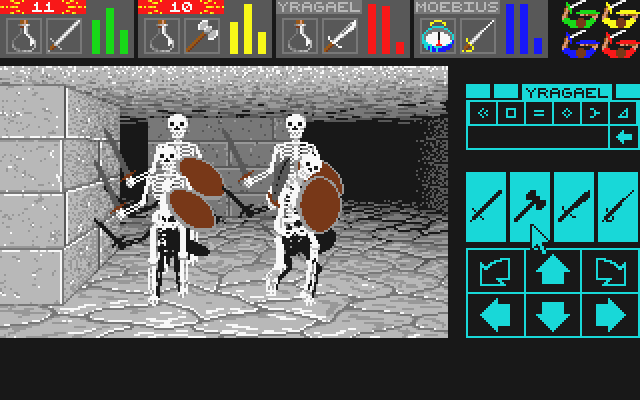
One of the Atari ST's most iconic games was Dungeon Master, developed by FTL Games and released in 1987. Dungeon Master was a first-person, real-time role-playing game (RPG) that introduced innovative mechanics and immersive gameplay. Players guided a party of adventurers through a dark, labyrinthine dungeon, solving puzzles, managing inventory, and fighting monsters in real time—a revolutionary concept for the era.
Dungeon Master was groundbreaking in its use of real-time combat, 3D graphics, and atmospheric sound, which drew players into its world in an unprecedented way. The game’s depth and complexity were enhanced by its physics-based puzzles, varied environments, and strategic combat system. It influenced countless future RPGs and is often credited as one of the most significant RPGs in gaming history.
For Atari ST users, Dungeon Master was a symbol of what the computer could achieve. It showcased the ST’s potential for immersive, graphically rich games, and the game’s popularity helped drive sales of the system. Dungeon Master went on to become a cult classic, loved by fans and game designers alike for its groundbreaking mechanics and engaging gameplay.
The Atari ST’s role in gaming and computing history
The Atari ST thrived in the late 1980s and early 1990s as a computer that balanced both productivity and gaming. Its open architecture and accessible design allowed users to explore various applications, from games and graphic design to music production and word processing. The ST’s success was partly due to its affordability, which made it an attractive option for students, creatives, and gamers who wanted a capable machine without a high price tag.
For gamers, the Atari ST had an extensive library of titles across all genres, with notable games like Dungeon Master, Carrier Command, and Falcon. Each game demonstrated the system’s potential, with immersive graphics, detailed sound, and innovative gameplay mechanics. The ST became a platform that supported creativity, entertainment, and experimentation, and many developers used it as a stepping stone to expand their skills and creativity.
The legacy of the Atari ST
Though the Atari ST was eventually outpaced by more advanced systems, its impact on gaming and digital creativity is undeniable. It was a beloved machine that introduced people to the possibilities of computer-aided music, digital art, and immersive gaming. The ST’s legacy lives on among retro computing enthusiasts and musicians who still celebrate its influence on digital music production.
Today, the Atari ST is remembered as a versatile and influential system that bridged the gap between gaming and creative tools. Its innovative features and robust software library solidified its place in computing history, and it remains a treasured piece of technology for those who experienced its peak. The Atari ST wasn’t just a computer—it was an ecosystem for creative expression, exploration, and fun, forever leaving its mark on the worlds of gaming, music, and digital art.

